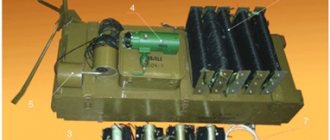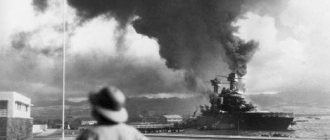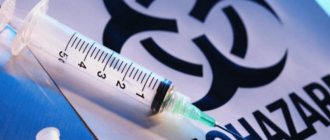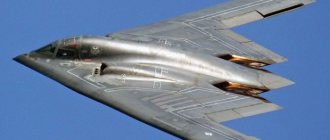Truly, there is a devil in the explosives, ready to start destroying and breaking everything around at any second.
Keeping this creature of hell in check and releasing it only when required is the main problem that chemists and pyrotechnicians have to solve when creating and using explosives. For several centuries, the only type of explosive that man used was black powder. With its help, cannonballs were thrown at the enemy, and explosive shells were filled with it. Gunpowder was used in underground mines to destroy fortress walls and crush rocks. However, gunpowder was not the only type of explosive known to man. For example, mercury fulminate was discovered in 1799 by Edward Howard. The famous melinite (aka picric acid, shimosa, trinitrophenol, lyddite, perthite, picrite) was described by the English chemist Woolf back in 1771, and even then its explosive properties were known.
Until the end of the first third of the 19th century, gunpowder fully met the needs of progress. But science and industry did not stand still, and soon it ceased to meet the requirements of the time due to its low power.
Explosive oil
And in 1846, chemists proposed two new explosives - pyroxylin and nitroglycerin. In Turin, the Italian chemist Ascanio Sobrero discovered that it is enough to treat glycerin with nitric acid (nitration) to form an oily transparent liquid - nitroglycerin. This can be done under the simplest conditions (making black powder is more difficult). The explosive power of nitroglycerin is more than 20 times greater than black powder and in most respects 4–5 times more powerful than TNT. Apart from the nuclear bomb, humanity has never invented a more powerful explosive than nitroglycerin.
But the devil living in nitroglycerin turned out to be evil and rebellious. It turned out that the sensitivity of this substance to external influences is only slightly inferior to mercury fulminate. It can explode already at the moment of nitration; it cannot be shaken, heated and cooled, or exposed to the sun. It may explode during storage. And if you set it on fire with a match, it can burn completely calmly... But by the middle of the 19th century, the need for powerful explosives was already so great that, despite numerous accidents, nitroglycerin began to be widely used in blasting operations.
The glory of curbing nitroglycerin belongs to Alfred Nobel. Who was this man who rode the messenger of hell? It is common knowledge that he is a Swedish scientist, engineer, inventor and entrepreneur. Much less known is Nobel's connection with Russia. Without it, who knows whether Nobel would have been able to invent dynamite?
Russian Swede
Alfred Nobel was born in Sweden in 1833, and already in 1837 his bankrupt father Emmanuel Nobel left Stockholm and went to Russia. Having received a good reward from the Russian government for the sea mine he invented, Emmanuel moved his family to Russia and in 1842 opened a mechanical workshop in St. Petersburg. Significant military orders allow the company to quickly develop into a large, thriving company (Fonderie et Atelier Mecanique Nobel et Fils).
The family's financial wealth allowed Alfred to receive an excellent education at home. Famous Russian chemist, full member of the Russian Academy of Sciences N.N. Zinin, who gave the sickly Alfred lessons in chemistry, instilled in him a love for this science. At the age of 16, Alfred was already helping his father in the development of sea mines, and then went to Paris, where he studied chemistry under the guidance of the famous scientist Pelus.
By 1854, Zinin, after lengthy attempts to tame nitroglycerin, became disillusioned with it, but passed on to his former student the safety rules he had developed: it was Zinin who determined the basic properties of nitroglycerin and the temperature limits within which it “behaves decently.” During this period, Nobel became close to artillery officer V.F. Petrushevsky, a great enthusiast of nitroglycerin, who did a lot in the field of studying methods for producing this explosive, and Russian chemists Jacobi and Vereskov.
Detonator capsule No. 8 is a copper tube, closed at one end and open at the other.
Explosive character
On July 17, 1866, a terrible explosion thundered in Peterhof - 20 pounds of newly obtained nitroglycerin flew into the air. The result is a categorical ban by Emperor Alexander II to carry out any work with hazardous liquids in Russia. But shortly before this, Petrushevsky suggested to Nobel that the cause of nitroglycerin explosions is its decomposition with the formation of acidic unstable compounds, and mixing it with a substance that neutralizes acids will make the explosive less dangerous. Petrushevsky did not invent dynamite, but at that moment he was half a step away from it. It was he who suggested to Nobel the direction of further searches.
Despite the extreme danger, the need for powerful explosives was very great. In 1863, Nobel arrived in Stockholm, where he devoted himself entirely to developing safe technologies for the production of nitroglycerin. He invents an injector for continuously mixing glycerin with acid during the nitration process, which dramatically reduces the risk of explosions in production. To increase safety, the workers monitoring the nitrification process sit on one-legged stools at the time - so as not to fall asleep and not let the chemical reaction get out of control.
Despite the patent Nobel received, the nitroglycerin devil was not afraid of his new owner. On September 3, 1863, the Nobel plant in Gelenborg exploded. Alfred's younger brother, 20-year-old Albert, dies in the explosion. Nevertheless, in 1865, the Nobels managed to launch two new plants for the production of nitroglycerin - in Sweden and Germany. Alfred “tours” throughout Europe and America, proving at public lectures the safety of nitroglycerin if the rules for handling it are followed.
Nobel demonstrates his "exploding oil" to American businessmen, receives a US patent and establishes his own company on the Atlantic coast of America. The American gunpowder manufacturer DuPont, sensing competition, actively resists the introduction of a new product. But then an enterprise in Germany blows up, and almost simultaneously two large explosions occur in mines in Sweden. In December, a nitroglycerin plant in the United States explodes and two ships carrying nitroglycerin disappear into the depths of the ocean without a trace. Nobel's name is cursed all over the world; in New York he is even asked to leave the hotel where he was staying and take all the nitroglycerin samples with him. One after another, European countries are passing laws banning the production of nitroglycerin on their national territories.
Ciliate soil
The ban on nitroglycerin threatened Nobel with complete ruin. And then Alfred returns to his idea, which he began working on back in 1862 - neutralizing the sensitivity of nitroglycerin when it impregnates any porous substance. This path was suggested to him back in 1855 by Petrushevsky, who tried to impregnate black powder with nitroglycerin, thereby hoping to increase the power of the explosive.
In 1864, Nobel finds the required substance. Diatomaceous earth, also known as diatomaceous earth, infusor earth and rock meal, is formed when siliceous shells of mollusks and some algae are deposited on the bottom of reservoirs. Ciliate soil can be found in every lake, 90% of its volume is in pores that can greedily absorb nitroglycerin.
The first experiments gave excellent results. The mixture of nitroglycerin and kieselguhr was weaker than the pure liquid by about a quarter (that’s how much kieselguhr occupies in the total volume), but was almost safe to handle. Nobel gave this mixture, which looked like peat, the name “dynamite” (from the Greek word “dinos” - strength). After a series of careful tests, on May 7, 1867, he patented dynamite in England, Sweden, and Germany. New explosives are conquering Europe. Of course, dynamite can be thrown, cut, shaken, it can be put in bags and boxes, and it does not explode! But at the same time it works reliably when needed. The irony of fate is that a year later Petrushevsky completely independently mixes nitroglycerin with magnesia and obtains an explosive, later called “Russian dynamite.”
Triumph of Dynamite
The end of the nineteenth century and the beginning of the twentieth is the period of triumph of dynamite. It finds the widest application in the development of rocks, when laying tunnels, in mines. With his help, during the construction of the railway through the Gotthard Pass, 80 tunnels were made, including the “Great Tunnel” - 15 km of solid rock. Dynamite was used to make pits for the supports of 324 bridges. Dynamite played a huge role in the construction of the building of the century - the Panama Canal. 3,000 tons of dynamite were used to excavate New York's New Croton reservoir system (completed in 1890). Dynamite ensures the construction of the Alpine Tunnel and the Corinth Canal, the removal of underwater rocks in the East River (New York), the clearing of the Danube bed... Of course, dynamite began to be used in the Baku fields, where the “Russian Rockefellers” - Alfred Nobel and his older brother - were in charge .
Dynamite not only brought fame and glory to Alfred Nobel, but also made him a millionaire. If in 1867 his factory produced only 11 tons of dynamite, then seven years later the annual production at Nobel's factories was already 3,300 tons.
However, not all countries reacted favorably to these explosives. Thus, in France, military needs forced the production of dynamite to begin in the spring of 1871, but the defeat in the Franco-Prussian War led to the fact that production was curtailed until 1875. In England, Abel's lobbying for black powder caused Parliament to pass legislation in 1869 banning the manufacture, import, sale and transport of nitroglycerin and any other substance containing nitroglycerin within Great Britain. This law, under pressure from the coal lobby, which was in dire need of good explosives, was repealed only in 1893.
In seven years, Nobel built 17 factories in different countries of the world. By this time, his enterprises produced more explosives than the state-owned gunpowder factories of all countries of the world combined.
Nobel's final invention was the smokeless gunpowder ballistite, created by Alfred in collaboration with his personal secretary, the young Swedish chemist Ragnar Salman.
Alfred Nobel died at the age of 63 on December 10, 1896 in San Remo at the zenith of his fame and power. He owned 93 enterprises that, in addition to dynamite, produced nitric acid, glycerin, fertilizers, copper alloys, wire, cable, nitrocellulose and all types of explosives and detonators.
Forgotten invention
It is generally accepted that dynamite was Alfred Nobel's finest hour. But experts believe that his main invention was not dynamite at all, but a small copper tube. The detonator capsule became a real revolution in the field of explosives, comparable only to the invention of the internal combustion engine in the field of mechanical engineering.
When black powder was used as an explosive, there were no problems with initiating an explosion - it was enough to pour a path of the same gunpowder onto the charge and set it on fire. Later they began to use stopin (thread impregnated with saltpeter), then Bickford came up with his famous cord. When the fire reached the gunpowder, an explosion was guaranteed. The situation changed with the advent of nitroglycerin, pyroxylin, and melinite. These explosives, including even the very sensitive nitroglycerin, flatly refused to explode from an open flame.
The best way to initiate an explosion was to use... an explosion. Mercury fulminate had already been invented and was used in percussion caps to ignite gunpowder in guns (percussion cap guns) and later in cartridge primers. Alfred Nobel in 1863 had the idea to fill a copper tube open at one end with mercury fulminate in a sufficiently large amount. This tube was placed in an explosive charge, and a fuse cord was inserted into its open end. The jet of flame from the ignited cord reliably ignited fulminate of mercury, sensitive to any external influence, and a small explosion was enough to explode nitroglycerin, and later dynamite and other explosives.
Alfred Nobel developed a whole line of twelve blasting caps of various sizes and numbered them. Number 8 turned out to be the most suitable for most blasting operations. Over time, the detonator cap was improved, many of its varieties appeared, but the Nobel “number eight” today has the same dimensions and design and is used in all countries of the world, unlike dynamite, gradually and imperceptibly faded into secondary roles and almost completely disappeared from the stage.
What is dynamite
The first option developed by Nobel, “gurdynamite”, or dynamite No. 1, is 75% nitroglycerin and 25% kieselguhr. Nobel dynamite No. 2 contains 25% nitroglycerin and 75% diatomaceous earth, dynamite No. 3 contains 35% nitroglycerin and 65% diatomaceous earth. The last two are much weaker, but much safer to use. The Gurdynamites left the scene very quickly. Nobel and other chemists began to create a variety of mixtures using nitroglycerin. Research led to the emergence of a new dynamite No. 3, consisting of 22% nitroglycerin, 66% nitrate and 12% coal. In Germany, a variety of dynamite called "carbonite" (26–30% nitroglycerin, 25–40% potassium nitrate, 25–40% rye flour) was developed.
In the USA, Egbert Judson developed and patented a type of dynamite called “Judson Powder”, which contained potassium nitrate and sulfur, as well as anthracite coal and asphalt with the addition of only 5% pure nitroglycerin. In 1875, Nobel created “explosive jelly.” A simple mixture of nitroglycerin (93%) and nitrocellulose (7%) was given the name “Rattling Jelly A” by Nobel. In the jelly of modification B there is only 82–88% nitroglycerin, 5–6% nitrocellulose, 3% cellulose and 5–6% sodium nitrate. In the end, there were about a dozen varieties of ordinary dynamites, three gelatinized, four powdered. And dynamite has many names: tolamite, martinite, lignamite, tricelite, grisutindynamite, gelatindynamite, gelignite, grisutin.
Powder
We have already completed the first task and found the amount of sand we needed. Now we should pay attention to the second stage and find or extract gunpowder. Since our goal is to make dynamite in Minecraft, without this resource it will be impossible.
Where can I find gunpowder? This is where you have to show patience and ingenuity. This component is not so easy to obtain. The problem is that gunpowder can only be found in treasuries. However, there is another method that will ultimately lead to the desired result.
Gunpowder can be knocked out of ghosts or creepers. But don’t be overconfident, as this seems like an easy task only at the beginning. There are some pitfalls that you must become familiar with and be prepared for.
- Ghosts move very well and during the battle they can simply fly away. Therefore, it is worth being prepared for such a development of events, and having a plan of action in this case.
- The Creeper is an unsightly green monster, with whom meeting is not always welcoming, so it can add problems to you. And in this case there are pitfalls. The fact is that when this object explodes, it destroys the element we need, which is useful for creating dynamite. The player will have to show all his skills and unprecedented cunning in order to deal a fatal blow to the creep with his own hands, and at the same time deprive him of the opportunity to explode.
When all our actions to collect the components we need have been successful, we can begin the process of making dynamite according to the scheme presented below.
Our dynamite has been created! Now we have the most “delicious” part of the work. It is worth deciding on the location of the bookmark and moving to a safe distance.
Important information!
You have only 4 seconds from the moment of detonation to a powerful explosion.
TNT is activated using the following means:
- fire or lighter;
- redstone device (lever, button, or pressure plate).
This is what the installed TNT block looks like:
Here are the consequences after a dynamite explosion:
Military applications
Dynamite was first used in the Franco-Prussian War of 1870–1871, when Prussian sappers blew up French fortifications with dynamite. But the safety of dynamite turned out to be relative. The military immediately found out that when shot by a bullet, it explodes, and in certain cases the combustion turns into an explosion. Dynamite requires skilled handling. When frozen, it sharply increases its sensitivity, and when it thaws, nitroglycerin appears on its surface, revealing all its shortcomings. Dynamite cannot be stored for a long time (explosers say “dynamite sweats”). Dynamite cannot be pressed or even compacted in any way. This means that artillery shells, torpedoes and mines cannot be filled with dynamite: in peacetime they are stored for years and decades in boxes stacked in stacks.
The military was more satisfied with pyroxylin (discovered by Schönbein in 1846), which was more chemically stable; its sensitivity could be adjusted by changing its humidity. TNT, which appeared on the scene at the beginning of the 20th century, turned out to be the gravedigger of pyroxylin and finally ousted dynamite from the military sphere. Today, dynamite finds very little use in civilian sectors of the national economy. It accounts for a maximum of 2% of the total amount of explosives consumed.
The American field manual FM 5-250 Explosives and Demolitions divides dynamites into standard (for blasting) and military. The latter is less powerful, but safer to store and handle. However, only one traditional name remains from dynamite - nitroglycerin is not included in its composition (the mixture consists of 75% hexogen, 15% TNT, and 10% desensitizers and plasticizers).
How to Explode Progress: The Destructive Story of Dynamite
It's April 1866. The contents of one of the packages at the Wells, Fargo & Co. office. leaked a lot. A couple of clerks went to check the box marked "Nobel's Nitroglycerin" with their opening tools. The ensuing explosion destroyed all the windows on the street within a kilometer radius, killing those clerks and a dozen other poor fellows. In the same year, Alfred Nobel patented dynamite, a revolutionary explosive that was much more stable and safer than liquid nitroglycerin.
Sasha Epstein
9 July 2020 09:00
For a long time, the only explosive widely used was gunpowder, a mixture of sulfur, coal and potassium nitrate. This powder deflagrates, or burns, at subsonic speeds, which is not that fast, releasing heat and gas. When this reaction is contained, it produces explosive energy that is enough to dislodge the bullet from the gun, but not enough to blow up the barrel itself. In mining, powder was a passable, although not very precise, tool.
In 1847, Italian chemist Ascanio Sobrero mixed glycerin with nitric and sulfuric acids to create the first explosive. It turned out that the resulting nitroglycerin does not deflagrate, it detonates - the combustion process occurs at supersonic speeds. When the molecular bonds between carbon, nitrogen, hydrogen and oxygen are broken, the molecules rearrange into gases such as hydrogen dioxide and carbon monoxide. This in turn starts a chain reaction with the release of energy many times greater than the energy of gunpowder. And that's a plus. The downside is that any hit or jolt can cause a reaction, making the nitroglycerin pretty darn unstable.
Women packing dynamite at Alfred Nobel's Ardeer factory in 1897
In 1863, young scientist and inventor Alfred Nobel invented the remote detonator. It consisted of a capsule containing mercury and a long wick. As soon as the wick burned, mercury fulminate (also called “mercury fulminate”) ignited the nitroglycerin. Over the next few years, Nobel built 16 explosives factories in 14 countries. But even with the addition of a detonator, nitroglycerin in liquid form was extremely unstable and dangerous, it could spontaneously explode with any awkward movement. And each subsequent death, and there were many of them, turned public opinion against Nobel’s first invention.
Working in a laboratory on a barge on Lake Mälaren in Sweden, Nobel set out to stabilize nitroglycerin by mixing it with something that would make it safe for transport. He tried everything - paper, gunpowder, sawdust, cotton wool, coal, plaster, brick dust - until he settled on siliceous earth (diatomaceous earth). This mud-like substance from fossil algae helped turn liquid nitroglycerin into a substance with the consistency of dough. From that moment on, progress began to develop at an explosive pace.
At first, Nobel called his invention “Nobel’s safe explosive,” but later renamed it “dynamite.” Almost immediately, dynamite became an indispensable industrial tool. The power of nitroglycerin combined with Nobel's detonators was capable of crushing huge quantities of ore in a very short time, and the stability of the new form meant that it could be easily transported to remote construction sites. The invention of dynamite coincided with the fact that the construction of railways often ran into mountains, in which it was much easier to build a tunnel than to build a bypass road. By and large, some of the most monumental projects of the late 19th and early 20th centuries could not have been built without dynamite.
Nobel's invention gave the industry a huge boost, but dynamite was not a 100% safe solution. During long-term storage, nitroglycerin accumulated at the bottom. In cold weather he froze, which greatly reduced his sensitivity. Miners learned to carry sticks of dynamite in their socks to keep them warm.
In September 1904, a trolleybus in Boston ran over a box of dynamite weighing about 20 kilograms, which had fallen onto the pavement from the trolley. The explosion killed ten people. In 1913, a sudden explosion of 340 tons of dynamite carried from a barge onto a British steamship in Baltimore Harbor killed at least 50 people and injured many more. In 1926, one of the largest steam shovels in the world at the time was destroyed and its two operators were killed when it struck a forgotten dynamite mine with its bucket.
The explosion of a 4-ton charge of dynamite during the construction of the Hoover Dam on May 12, 1933 in Nevada
Nobel did not give up and looked for a safer solution. The addition of nitrocellulose as a solid material was another breakthrough. By replacing kieselguhr, Nobel increased the viscosity of the mixture. The result was a new and improved so-called gelatin dynamite. Unlike the dynamite of the first version, the nitroglycerin in the second did not leak at all. In addition, the new material could be used underwater.
Despite the fact that dynamite, in addition to industry, also appealed to the military, Alfred Nobel believed that his invention would prevent wars through mutually assured destruction, like the presence of nuclear weapons today. In the last year of his life, Nobel owned almost a hundred factories producing explosives and ammunition, and dynamite brought him a fortune. He left most of it in trust, establishing the Nobel Prize.
More than 150 years after its invention, dynamite is still in use. It is not as widespread as it once was, and the mining industry has switched to using cheaper, although less powerful, charges that are a mixture of ammonium nitrate and diesel fuel. The military has developed other explosives that can be used with surgical precision.
However, explosive technologies did what all developing technologies sooner or later do: evolve. Just keep in mind: the lithium in your cell phone battery and the silicon in your home computer's processor are both mined by blasting rocks. “If you are going to build the world, you must start by destroying it,” said Alfred Nobel, the inventor who changed human history with dynamite.










